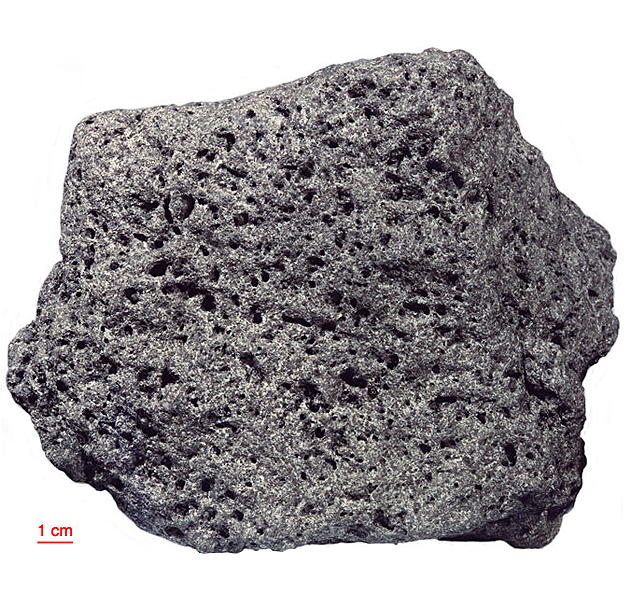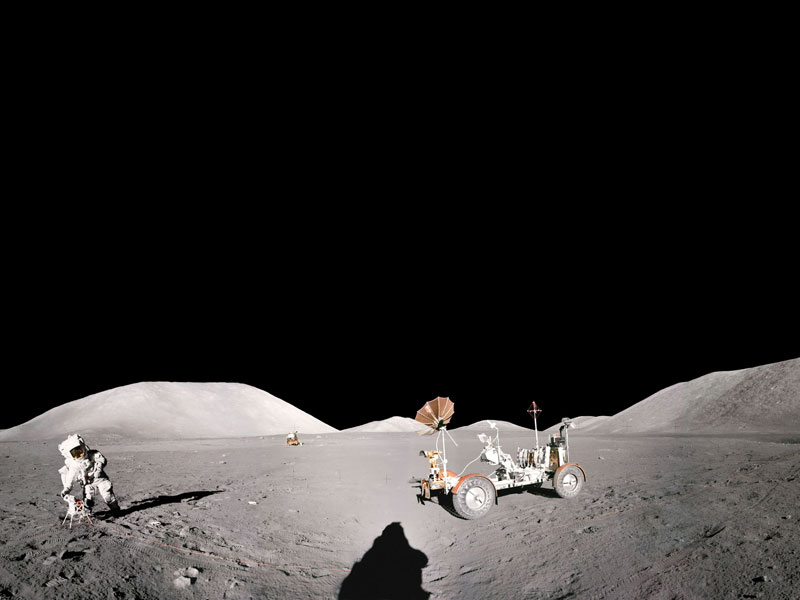
Fact sheet
Sample 70017 of high-titanium Mare basalt was collected from the area near the Lunar Lander during the Apollo 17 mission to the Moon, and was erupted on the lunar surface 3.7 billion years ago. The relatively coarse grain size indicates that this basalt cooled relatively slowly.
This sample was one of the last samples collected from the Moon by Apollo astronauts. They made a speech as they collected the rock, referring to ‘the children of the world’. For this reason it has been called The Children of the Word Rock. Subsequently, small pieces of the sample have been given to many countries for educational purposes.
In thin section, the rock is medium-grained vesicular basalt containing large poikilitic pyroxene and plagioclase feldspar crystals and common ilmenite. Cristobalite, the high temperature form of quartz is present in interstices between pyroxene, plagioclase and ilmenite. Olivine, troilite and chromite are also present.
Further details of this and other Apollo samples are here: http://curator.jsc.nasa.gov/lunar/
Apollo 17, the final manned landing mission, had two objectives: to obtain samples of ancient rocks from the lunar highlands and to look for evidence of younger volcanic activity on the valley floor.
This small Collection contains material deriving from both periods, including igneous rocks around 4.3 billion years old from the lunar highlands as well as younger volcanic samples dating from about 3.6 billion years ago.
Apollo 17 was launched on 7 December 1972.







